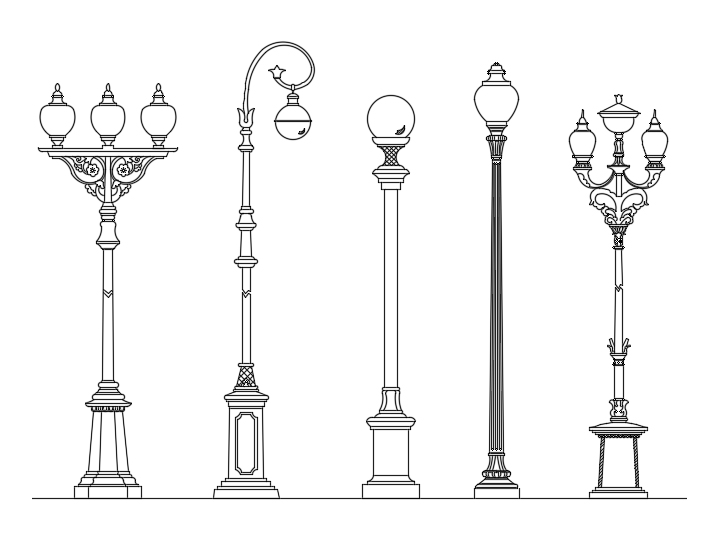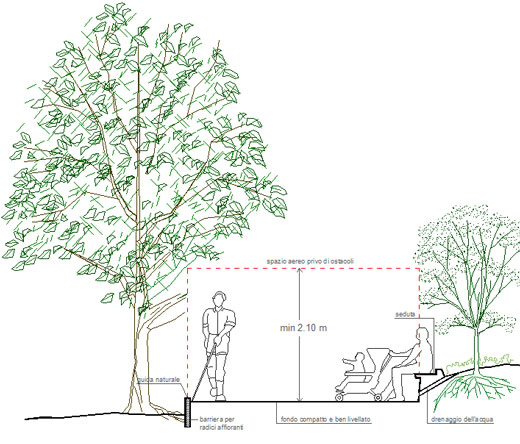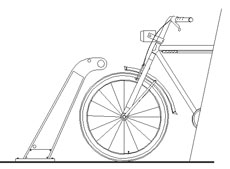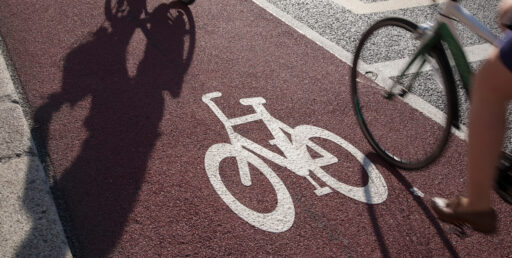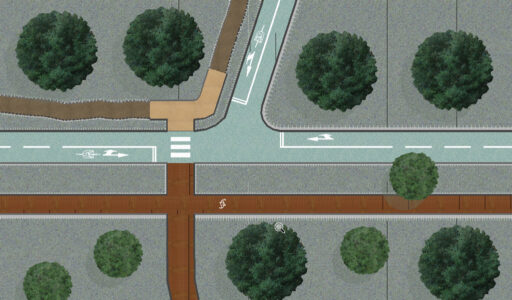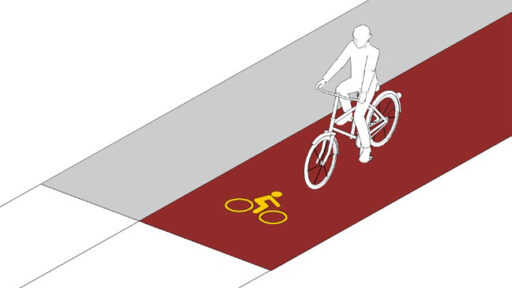Cycle paths
Geometric - Characteristics - Schemes
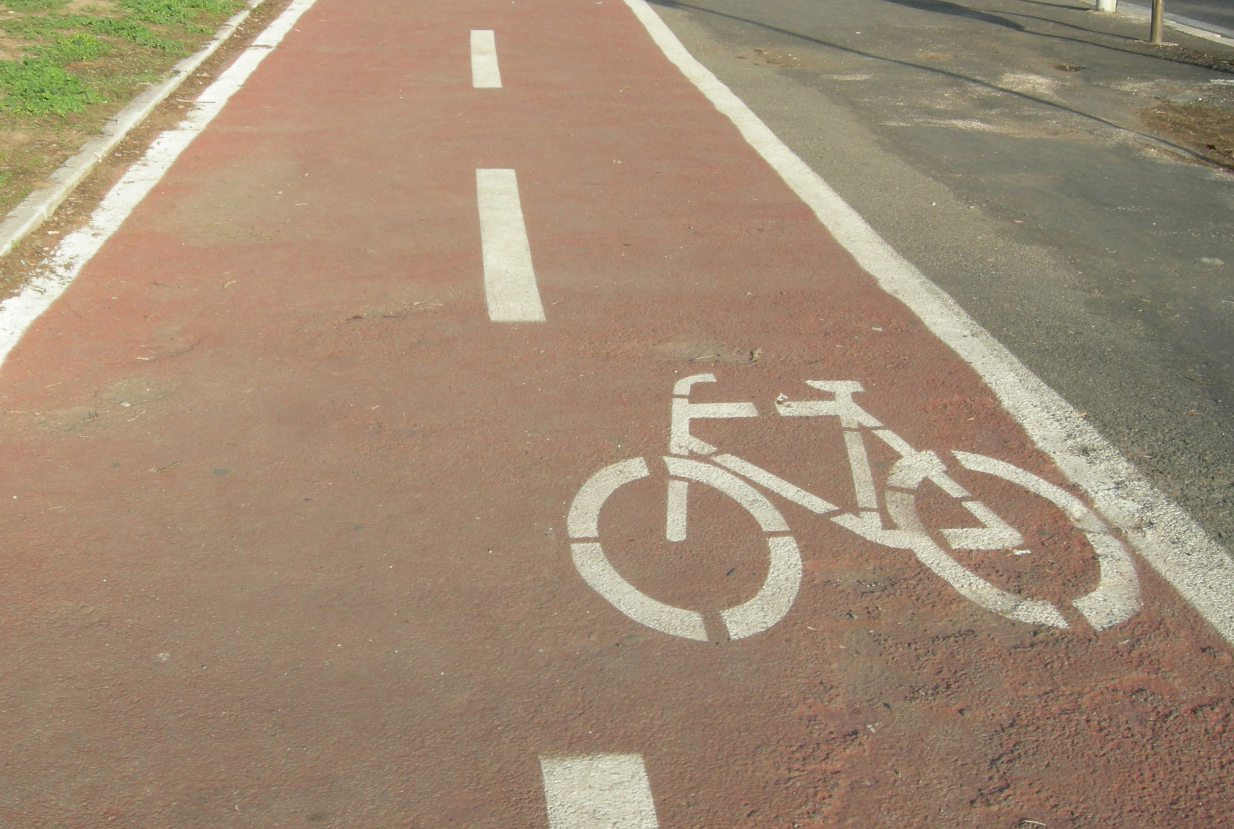
Cycle paths and cycle/pedestrian paths are important elements for promoting sustainable mobility, improving road safety and encouraging an active lifestyle.
Here are some points to consider when designing such routes
Context analysis: Assess the surrounding context, such as land use, vehicular traffic, population density and key destinations. This analysis will help determine areas where cycling and pedestrian paths are needed.
Connectivity: Create routes that connect points of interest such as residences, schools, workplaces, parks and public transport. A well-connected network increases the use of cycle paths.
Security: Security is paramount. Cycle lanes should be separated from vehicular traffic, preferably by physical barriers such as raised sidewalks or green areas. Crossroads and intersections must be well signposted and protected.
Size and width: Bike lanes should be wide enough to accommodate both cyclists and pedestrians. A minimum width of around 2.5 meters is often recommended.
Construction materials: Choose durable and suitable materials for the construction of cycle paths, such as asphalt, concrete or permeable surfaces.
Signage: Use clear and visible signs to indicate directions, distances, rules of use and safety information along the route.
Lighting: Provide lighting along cycle paths, especially in dark areas or at night, to ensure user safety.
Rest areas: Include rest areas along the route, with benches, fountains or kiosks, to allow users to rest or interact with the surrounding environment.
Accessibility: Ensure routes are accessible to all, including cyclists, pedestrians, seniors and people with disabilities. Plan for ramps, safe crossings and smooth surfaces.
Maintenance: Have a regular maintenance plan to ensure cycle paths remain safe and in good condition over time.
Community involvement: Involve the local community in planning to ensure that cycle paths meet the needs and preferences of residents.
Monitoring and adaptation: Collect data on the use of cycle and pedestrian paths and make changes if necessary, based on user feedback and evolving needs.
The design of cycle paths requires a holistic approach that takes into account the needs of safety, accessibility and practicality, trying to create a welcoming and attractive environment for cyclists and pedestrians.
The geometric and plano-altimetric characteristics of the cycle paths can be deduced from the C.N.R. and by Law no. 208/91 which first of all distinguishes between:
- tracks on their own premises – physically separated from those for motor vehicles and pedestrians by means of suitable elevated longitudinal traffic dividers;
- tracks in a reserved location if the separation element is validable and consists of a longitudinal demarcation strip.
The first type can also include slopes completely independent of the normal road layout. The former can be both one-way and two-way, while the latter can only be one-way according to that of the adjacent lane for vehicles.

The standard width of a cycle lane is 1.50 m. for only one direction of travel (to take into account both the overall dimensions of the cyclist and bicycle and the space for balance and an acceptable free movement) which can be reduced to 1.25 m. in the case of two adjoining lanes. Exceptionally and for very limited sections the width can be reduced to 1.00 m. for the slopes in their own home or for those in private premises located on pedestrian streets or on sidewalks.
The standard width of a cycle lane is 1.50 m. for only one direction of travel (to take into account both the overall dimensions of the cyclist and bicycle and the space for balance and an acceptable free movement) which can be reduced to 1.25 m. in the case of two adjoining lanes. Exceptionally and for very limited sections the width can be reduced to 1.00 m. for the slopes in their own home or for those in private premises located on pedestrian streets or on sidewalks.
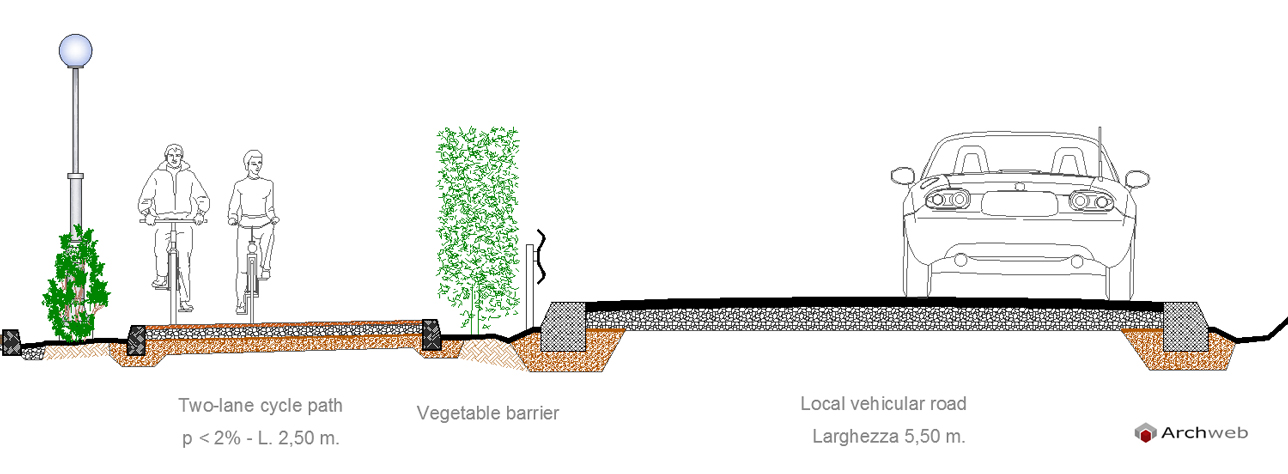
The width of the traffic divider which cannot be crossed between a track on its own site and a sliding road must not be less than 70 cm. to also allow the appropriate road signs to be affixed. For tracks on reserved lanes, the horizontal marginal signs, possibly increased, have the meaning of impassable traffic divider.
The design speed, to which in particular the stopping distances and therefore the clear lengths of view, must be defined trunk by trunk, taking into account that cyclists in the plains march at an average speed of 20-25 km / h and downhill with slope of 5% can reach 40 km / h.
The longitudinal slope is generally that of the adjacent road. In the case of slopes with paths independent of other roads, this slope must generally not exceed 5% (with the exception of ramps for cycle crossings that can reach 10%) with an average slope of the entire track that must not exceed 2%. These indications also serve to verify the feasibility of slopes adjacent to existing road routes.
Law 208/91 also provides information on the radii of horizontal curvature of tracks to be built from scratch and independent of other roads.
For roadway crossings, cyclists generally have to conform to the behavior of pedestrians. For level crossings on intersections for mixed use with motor vehicles and pedestrians, the cycle lanes on reserved lanes must generally be placed alongside the internal side of the pedestrian crossings, so as to establish for cyclists the roundabout traffic with sense single anticlockwise. For the crossings at staggered levels reserved for cyclists, the underpass solution with the maximum slopes already indicated is generally preferred.
Signage
The signing of both horizontal and vertical signs required by the current Highway Code is fundamental, placed in conditions of good visibility without it constituting a danger for users. At each beginning and end of the cycle path and at every intersection with other roads, the vertical identification signs of the track must be installed, integrated by dividing lines and by any repeated symbols on the pavement.
In the case of slopes with a reserved seat, a continuous yellow strip with an increased width of 30 cm must be placed next to the white border strip that delimits the roadway. with the bicycle symbol also in yellow repeated periodically along the track.
In sections where car traffic is very intense and it is not possible to create tracks on your own, in addition to the aforementioned signs, you can resort to mechanical bollards, such as “cat’s eyes”, rubber curbs, etc.
At the intersections it is also always good to put the symbol of “giving way” on the pavement, always leaving this to the vehicles to avoid dangers in the opposite case. At intersections with traffic lights it would be advisable to install traffic light lanterns for bicycles to avoid confusion with those for pedestrians.
Floors: types and materials
As for the type of flooring, this must first of all guarantee conditions of easy transit for cyclists, avoiding the use of grills for the collection of rainwater with elements that make it difficult for bicycles to transit.
Typically, in the case of slopes in a reserved location, bituminous pavements similar to those of the adjacent roads will generally be used, possibly with the addition of colored additives to further make the track visible.
In the case of slopes on their own, the choice can be very wide and varies from case to case. For example, for slopes on pre-existing country tracks, it is possible to resort to penetrating bituminous treatments, or to “white” treatments: laying of bitumen and subsequent laying of even colored gravel (porphyry, basalt, grits). In the case of paths in inhabited centers, it is possible to resort to flooring in self-blocking cementitious elements, or in porphyry or in concrete with surface roughening treatments.
Driving behavior
It is good to mention briefly also what the driving behavior that cyclists must follow because, if the effort of the Provincial Administration is to identify reserved and protected spaces for the movement of bicycles, on the other hand the New Code della Strada identifies in great detail what the behavior of the velocipedes must be on the road, so the achievement of adequate safety levels must necessarily also go through an intense job of road education.
First of all, a bicycle must comply with all the obligations of the other subjects who normally pass on the roads, thus respecting all the traffic limits that are set by the competent authorities. Furthermore, art. 182 imposes other specific limits for velocipedes, obliging cyclists to use the cycle paths in the existing sections and only in the contrary case they can use the normal roadway. In this case they must proceed in a single row when the conditions of the circulation require it and in any case never side by side in numbers greater than two. Outside the inhabited centers they must always proceed in a single row except in the presence of a minor of ten years who must stand on the right of one of an older age.
If the cyclists are in the way or danger to pedestrians, they must drive the vehicle by hand, and are thus completely assimilated to pedestrians whose normal rules of diligent and prudent conduct they must respect.
Source: http://www.provincia.bologna.it



























































